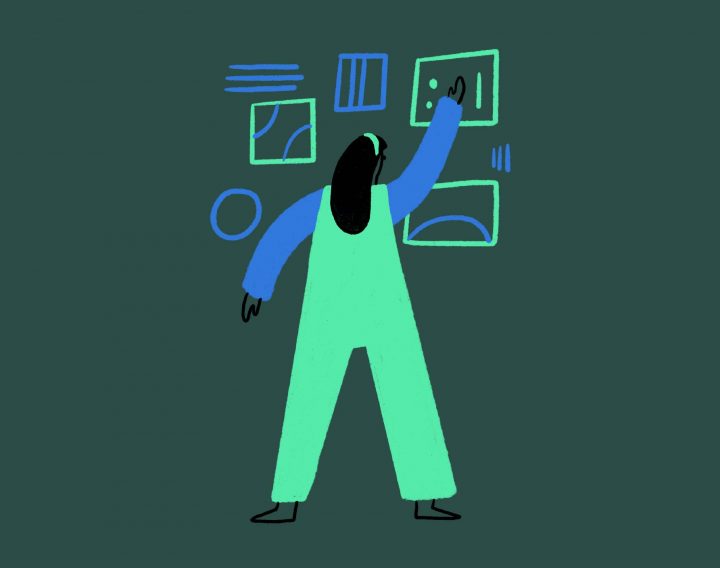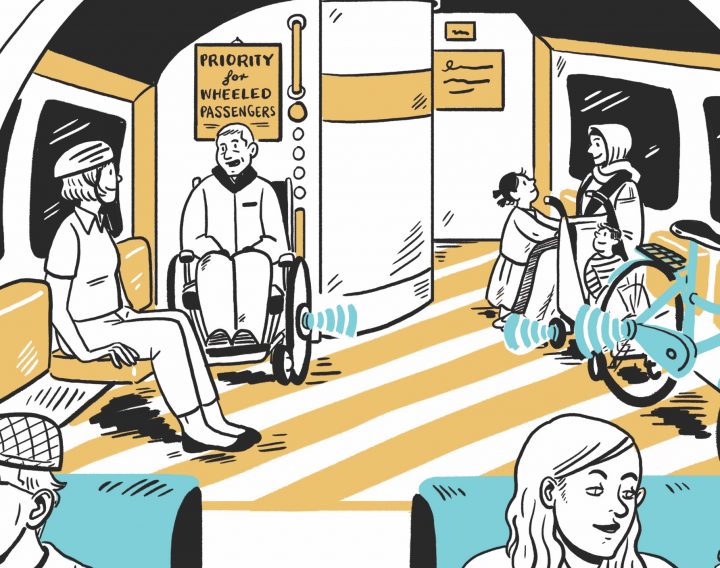
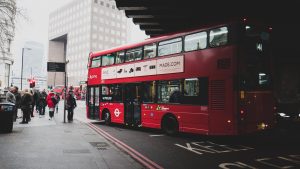
The Council engaged Snook and together, we spoke to people with disabilities and mobility concerns, who told us the problems they face when travelling. Of course in March, COVID-19 restrictions meant that we had to put the project on hold. When we resumed work we had to re-scope with residents to take into consideration changes in people’s attitudes to travel during a pandemic, as well as using remote research and testing methods.
We broke the work into five sprints, co-designing, developing and testing the product with the people who’d use it over a period of just over 6 months. Snook delivered a Beta product as well as three branding options to the council in December 2020. They plan to take this forward and test with people as COVID restrictions are eased during 2021.
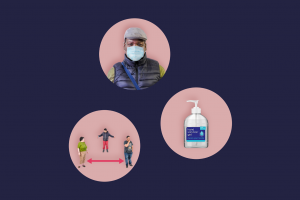
Building on a Discovery project about transport with Camden citizens
In 2019, we worked with Camden Council and residents on a small discovery and concept testing project where we found out that while there are plenty of travel planning apps available in London, they lacked accessibility features for people with low digital literacy or learning disabilities.
We realised there was an opportunity for a digital travel planning platform that allowed people to customise information, with outputs that were not necessarily digital-only.
Collaborating remotely during a pandemic
Running a project that would ordinarily involve a lot of collaboration in person when this was largely impossible meant that good communication was more important than ever.
We started the project with a kick-off meeting with the Camden team over a video call and set up communication channels such as Slack and Microsoft Teams so everyone could share ideas and progress at all times.
We also set a timeline for project workshops and standups with the client – every day when necessary – to ensure everyone felt like a cohesive team.
We ran Show and tells every two weeks (one per sprint). These are short, informal presentations where the team shares insights and progress with any wider stakeholders and interested parties. They’re conducted in the spirit of ‘working in the open’, so feedback can be gathered as the project progresses.
We also ran retros after every sprint to review progress, check the approach was working and adjust accordingly. The high frequency of these meant they could be shorter and more responsive to input as it happened.
Based on our findings from concept testing we worked with the client to understand people’s lived experience of travelling and use the resulting user stories in prioritisation workshops. We listened to people and worked together to look at possible solutions. This enabled us to analyse how much value certain features and functionality would add and helped us prioritise what we should design and develop.
Having a multidisciplinary team collaborating with the people who would be using the product streamlined the process as everyone was involved at all stages of the project. The development team and interaction designers worked closely with service designers and user researchers so they knew what to build for a Minimum Viable Product (MVP) based on a solid understanding of what people told us would be useful or not.
Adapting the project approach to in response to what we heard
People told us they could feel quite anxious about travelling somewhere new for the first time, so they tend to plan their journeys in advance to feel prepared.
The project approach was shaped around this. We focused on the theme of planning routes, e-scoping it to allow for iterative testing. We built a live Beta product that would allow the parties planning a route to test it together, share and print out a plan if necessary.
"Snook understood that the most important thing to us was that Plan Ahead was designed with the people who would use it. "
Remote usability testing in an agile environment
As it became clear that COVID-19 restrictions were not going to be eased and there was no alpha phase to test different concepts, we realised we couldn’t leave the usability testing until after the platform was built. So the project team added two rounds of testing during the development of the platform and gave recommendations for Camden Council to take forward into a final testing phase once restrictions were lifted.
We wanted to test three aspects of the platform; the planning, the outputs such as printing, and how users felt travelling using the live product. To test the planning aspect, Camden Council connected us with six associations (Camden council, SYNERGY, CLDS, Creative Support, Daylight Resource Centre, and Islington Council) for recruitment purposes. We ran 12 concept testing sessions with planners from those organisations.
The project has two key user groups – adults with learning disabilities and older people and we found that by designing the map with people with learning disabilities it would support older people too. Camden plans to test the map with other user groups to develop it further.
Due to safety and availability, the team focused on planning teams composed of travelling users (someone who needs help to plan routes and will travel using the directions that are created) and planning users (Support/care worker or family member who helps to plan routes).
We conducted these sessions remotely, asking for them to share their screens and feedback with us while using the prototype. We tested the prototypes with people with learning disabilities by either having them and their trusted planner together or by having a group of six people from one of the associations with a planner. The planner would share the screen and they would ask participants the questions while they used the prototype.
“It’s really good. This would have saved me hours and hours when working with someone. It’s fantastic! Thank you for getting this going”
Emotional design: creating branding options to test with users
When creating a product we need to consider how a person would use the map and what we want them to feel and think as well as meeting their needs. We created a space for collaboration with the client on ideas of the value proposition, personality and name options of the product. We felt that the product’s branding needs to convey that it’s trustworthy, loyal, and also supportive and humble.
We created 3 concepts that try to elicit different feelings from users. The first one is straightforward and functional to make users feel confident about travelling. The second uses a more delicate design to evoke calm and peaceful feelings; and finally, the third use energetic colours and illustrations to generate excitement about travelling.
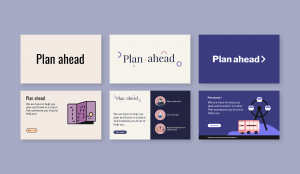
Further testing with a Live Beta when restrictions ease
We delivered a live Beta product in December 2020 which focuses on route planning from A to B, supports wayfinding with street imagery and the ability to print and/or share the route. This and a report with final recommendations, a plan for how to conduct phase three of testing will be taken forward by Camden council when COVID restrictions are eased during 2021.
